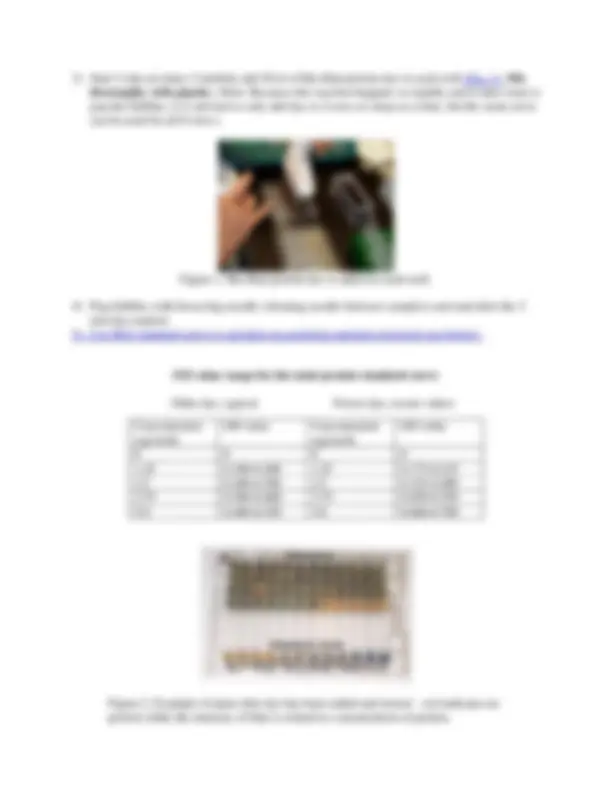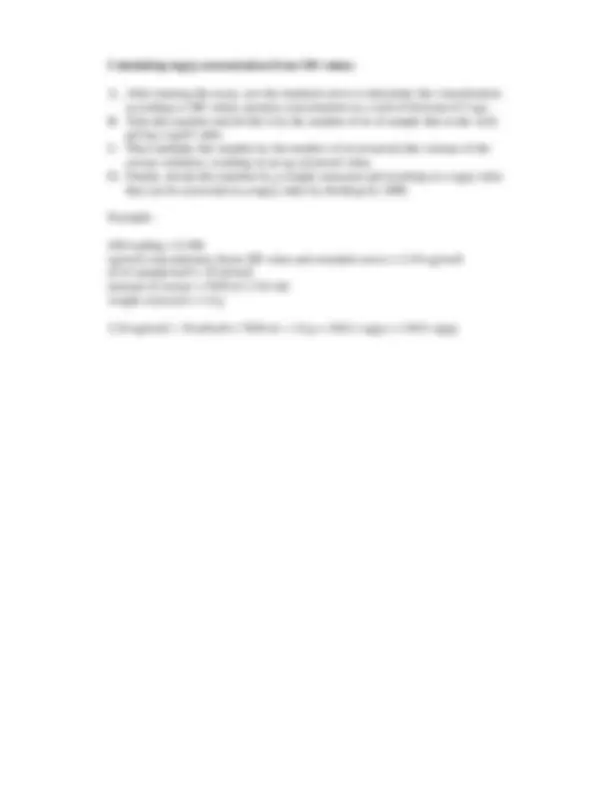




Study with the several resources on Docsity

Earn points by helping other students or get them with a premium plan


Prepare for your exams
Study with the several resources on Docsity

Earn points to download
Earn points by helping other students or get them with a premium plan
Community
Ask the community for help and clear up your study doubts
Discover the best universities in your country according to Docsity users
Free resources
Download our free guides on studying techniques, anxiety management strategies, and thesis advice from Docsity tutors
Introduction. This procedure is used to measure protein concentration in samples that were extracted for glomalin, using either the total or easily ...
Typology: Study notes
1 / 4

This page cannot be seen from the preview
Don't miss anything!



(Bradford, 1976 & Wright et al., 1996)
This procedure is used to measure protein concentration in samples that were extracted for glomalin, using either the total or easily extractable extraction procedure. This assay does not give the most accurate glomalin concentration, because it is not specific for glomalin, but it will measure any protein that has survived extraction. Total protein values are usually higher than the values calculated from the ELISA procedure, but running this assay will give an estimate of glomalin concentration and help determine the volume needed for the ELISA.
PBS (phosphate buffered saline), pH 7. BSA (bovine serum albumin) Bio-Rad protein dye 96-well microtiter plates or ELISA strips Micro-pipetter and tips Dissecting needle Plate reader (see below), with 590 or 595nm filter
BSA standard curve preparation
A. Make 1 ml stock solutions of 10 ug BSA/200ul PBS (10 mg/200 ml) and freeze, until needed. B. Thaw and dilute with PBS as outlined below:
BSA standards for Bradford protein assay Well designation
ug/well BSA stock solution(ul)
PBS (ul)
Blank 0 0 200 Standard 1 0 0 200 Standard 2 1.25 25 125 Standard 3 2.5 50 150 Standard 4 3.75 75 125 Standard 5 5 100 100
Color chart for sample volume determination
A. The color of the extract can help determine the right amount of sample to use for the reading to be somewhere within the values of the standard curve.
Sample color ul sample/well Golden 50+ Golden-brown 25- Brown 10- Reddish brown 5- Reddish black 1-
Example of colors of extracts and amount of sample needed 10 ul 5 ul 2 ul
Calculating mg/g concentration from OD values
A. After running the assay, use the standard curve to determine the concentration according to OD values (protein concentration in a well of between 0-5 ug). B. Take this number and divide it by the number of ul of sample that in the well, giving a ug/ul value. C. Then multiply this number by the number of ul extracted (the volume of the extract solution), resulting in an ug extracted value. D. Finally, divide this number by g weight extracted and resulting in a ug/g value that can be converted in a mg/g value by dividing by 1000.
Example:
OD reading = 0. ug/well concentration (from OD value and standard curve) = 2.54 ug/well ul of sample/well = 10 ul/well amount of extract = 7650 ul (7.65 ml) weight extracted = 1.0 g
2.54 ug/well ÷ 10 ul/well x 7650 ul ÷ 1.0 g = 1943.1 ug/g = 1.9431 mg/g